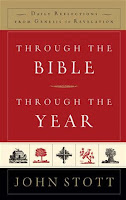
Parable of Lostness –
Luke 15 (part one)
Jesus has just finished two parables that address the
subject of hospitality – how to show it and receive it (14:7-24). In chapter 15, Jesus is practicing what he
preaches and it gets him into trouble with the religious leaders who grumble
“This man receives sinners and eats with them” (15:2).
In response to the hostility Jesus tells another “sideways”
story. It is important that this is one
(not three parables). Luke specifically
says Jesus to them “this” parable. It is
one parable with at least three movements.
How can we be sure? Each movement
has a common theme (something is lost), common refrain (something (or someone)
was lost and is now found, come rejoice with the finder of the lost) and a
common development (the stakes keep getting higher). The third movement is the climactic one,
where the younger son is lost by the Father and ultimately found. Each of the these movements paint a picture
of God the Father who is the one who seeks the lost: the shepherd, the woman and the Father. How do the first two movements – a lost sheep
and lost coins – function with this larger whole?
Lost Sheep
Jesus tells a story of a shepherd who loses one in one
hundred sheep. He is a good shepherd so
he leaves the ninety and nine to pursue the one lost one. In a shepherding culture this would not be an
unfamiliar sight or story. Jesus is
drawing on both common experience and a strong biblical motif, as the following
chart illustrates (based on a chart by Ken Bailey):
David (Psalm 23)
Jeremiah (Jer.23:1-8) Ezekiel (Ezek. 34:1-31) Jesus (Luke 15:4-7)
-----------------
|
Bad Shepherd
|
Bad Shepherd
|
Bad/Good Shepherd
|
Lost Sheep
|
Lost flock
|
Lost Flock
|
Lost Sheep
|
Problem: A sheep
is lost
|
Problem:
shepherds destroy & scatter sheep
|
Problem:
shepherds scatter & eat sheep
|
Problem: shepherd
loses a sheep
|
Good Shepherd:
God
|
Good Shepherd:
God + David
|
Good Shepherd:
God + David
|
Good
Shepherd: Jesus
|
Incarnation
implied
|
Incarnation
promised
|
Incarnation
promised
|
Incarnation
implied
|
Price paid: bring
back
|
Price paid:
Gather, bring back
|
Price paid:
Search for, save, deliver, bring back
|
Price paid:
search for, find, carry back
|
Repentance:
return to God
|
Restoration:
Return to Land
|
Restoration: Return
to Land
|
Repentance:
Return to God
|
-----------------
|
-------------------
|
Bad Sheep
|
Bad Sheep?
|
Celebration
|
-------------------
|
-------------------
|
Celebration
|
Story ends in the
house
|
Story ends in the
land
|
Story ends in the
land
|
Story ends in the
house
|
A Semitic metaphor for God is set in a classical Jewish
story reshaped by Jesus. Jesus is placing himself in the form of God in accordance with Biblical
imagery and biblical themes. (BTW, this teaching is another reason, among many, I believe Jesus is the
origins of the early Church’s high Christology). Remember
the audience (15: 2). Jesus is talking
to the shepherds of Israel and indirectly blaming them for losing the sheep he
is now finding. They may or may not have
gotten that reference. They are in
complete denial about being “bad” shepherds.
They are convinced Jesus is. So
Jesus ups the ante with two more stories.
Lost Coin
In the first movement something of value is lost: one
sheep. More precisely, one in a hundred
sheep is lost. The contrast between
Jesus and Israel’s bad shepherds may or may not have been taken. So Jesus now moves to something of more value
and more rare (a drachma represent a day’s wage and there are only 10). So we have a coin representing the value of
more than one sheep and there are only 10.
The stakes have gone from 1/100 to 1/10.
And by moving from a shepherd as the “God figure” to a woman as the “God
figure” Jesus is upping the ante in terms of his metaphorical theology.
Throughout the Gospels (and especially in Luke), Jesus is
elevating the status of women, even calling them to be part of his band of
disciples (cf. Luke 8:1-3). But now he
goes farther and uses a woman to play the role of God in his parable of
Lostness. There is much that can be said
about this, but in terms of Luke 15 it plays a preparatory role as we prepare to
meet God in this third and most important metaphor of “the Father.” Indeed, according to Jesus’ use of the language,
“Father” is more than a metaphor. And
Jesus uses the metaphor of shepherd and woman to expand and re-shape our
understanding of how he understands and relates to his (and eventually our)
heavenly Father. Since earthly fathers –
even the best of them – are pale echoes of the heavenly father, Jesus must
reshape our earthly categories so that we don’t project erroneous
understandings upon that nature of God.
No comments:
Post a Comment